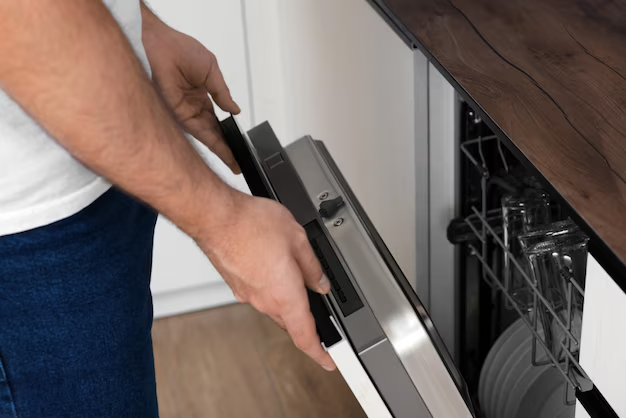Can You Safely Lay a Refrigerator Down? Essential Tips and Considerations
When you're moving or transporting a refrigerator, it's easy to wonder if it's okay to lay it on its side or back. After all, these large appliances can be bulky and difficult to maneuver. The idea of simply laying it down might seem like an enticing solution. However, this action can lead to a series of issues if not done with caution and understanding. Let's dive into the specifics and explore whether it's truly okay to lay a refrigerator down and what considerations should come into play if you decide to do so.
Why Position Matters
Maintaining the Refrigerant Flow
Refrigerators operate through a closed-loop system of refrigerant, which cycles through various components to provide cooling. When the appliance is positioned correctly, this system functions optimally, maintaining the right pressure and flow. Laying the refrigerator down can disrupt this balance, as it can cause the refrigerant oil to move from the compressor into other parts of the refrigerant lines. This displacement can lead to inadequate cooling capacity and even damage the system if the oil doesn't return to the compressor properly when the fridge is upright again.
Risk to Internal Components
Inside the refrigerator are multiple components, like shelves and crispers, that are secured for use in an upright position. Laying a refrigerator down can potentially cause these components to shift, bend, or break. This is particularly true for the glass shelves that can easily shatter if the fridge is suddenly jostled while horizontal.
Protecting the Compressor
One of the key components of any refrigerator is the compressor. This vital part is designed to work optimally when the unit is upright. When a refrigerator is laid down, compressors can potentially be subjected to undue stress, leading to operational problems. Therefore, it's crucial to consider the implications of laying a refrigerator on its side or back.
Manufacturer Guidelines and Considerations
Checking the Manual
Before you reposition, always consult your refrigerator's manual. Manufacturers often provide specific guidance regarding moving and positioning their products. Opting for these recommendations ensures that you won't accidentally void any warranties.
Different Models, Different Needs
Not all refrigerators are built the same. Side-by-side models, for instance, may have different requirements from bottom freezer units. Understanding the requirements for your particular model is essential for safe transportation.
Customer Support: A Reliable Resource
If in doubt, contacting the refrigerator manufacturer's customer service is a practical step. They can offer advice tailored to your specific model and situation, ensuring you're making informed choices.
Practical Tips if You Must Lay It Down
Choosing the Right Side
Should it become necessary to lay your refrigerator down, choosing the right side can make a difference. Generally, laying a refrigerator on its side is preferable to placing it on its back, as it reduces the risk of damaging internal components and encourages oil and refrigerant to stay where they belong. If possible, choose the side opposite the compressor tubing.
Secure and Cushion
Before laying a refrigerator down, secure all internal shelves and crispers either by removing or fixing them in place. Using blankets or padding around the refrigerator can offer cushioning, minimizing potential impact damage.
Let It Stand
Once relocated, the rule of thumb is to let the fridge stand upright for as long as it was laid down, with a minimum of two hours before powering it up again. This waiting period allows the compressor oil and refrigerant to settle back, reducing the risk of operational issues.
Alternative Solutions for Moving a Refrigerator
Using a Dolly
An appliance dolly is a valuable tool, especially for refrigerators. These dollies are designed to transport appliances while maintaining an upright position, making them ideal for preventing issues associated with laying a fridge down.
Professional Movers
Consider hiring professionals. They bring experience and the correct equipment to move large appliances safely, reducing the risk of damage or injury during transit.
Renting a Moving Truck
In some cases, renting a moving truck with high ceilings can help maintain the refrigerator in an optimal upright position during transportation. This method decreases the overall risk of damage significantly.
Common Questions About Laying a Refrigerator Down
Will Laying a Refrigerator Down Cause Permanent Damage?
While it doesn't always lead to immediate damage, laying a refrigerator down can introduce risks that may result in long-term issues, particularly with cooling performance.
What Should I Do Immediately After Transporting a Fridge on Its Side?
Once moved, allow the refrigerator to remain upright and unplugged for an equivalent duration as it was on its side. This precaution helps the system equalize and potentially avoids operational hiccups.
Can Transporting a Fridge on Its Side Void the Warranty?
It's possible. Some manufacturers explicitly state that improper handling can void warranties, particularly if the compressor becomes compromised due to incorrect positioning during transport.
Key Takeaways for Safe Refrigerator Transport
To make this complex topic more digestible, here’s a summarized guide with tips to follow when dealing with refrigerator transport:
- ✅ Consult the Manual: Always start by checking the manufacturer's instructions regarding transport.
- ✅ Avoid Laying Down If Possible: Use alternative methods, such as a dolly or professional movers.
- ✅ Choose the Right Side: If laying down is unavoidable, place the refrigerator on the side opposite the compressor tubing.
- ✅ Secure Interior Components: Remove or fasten shelves and drawers securely to prevent damage.
- ✅ Wait Before Plugging In: After relocating the fridge, let it stand upright for a period before turning it on to ensure all fluids have settled.
Moving a refrigerator is no small feat and requires careful consideration to avoid damaging both the appliance and your property. While sometimes laying a refrigerator down might seem like the easiest solution, weighing the risks and taking the correct precautions ensures your fridge continues to function as expected. Understanding and practicing the necessary steps can save you from potential headaches and prolong the life of your refrigerator.
